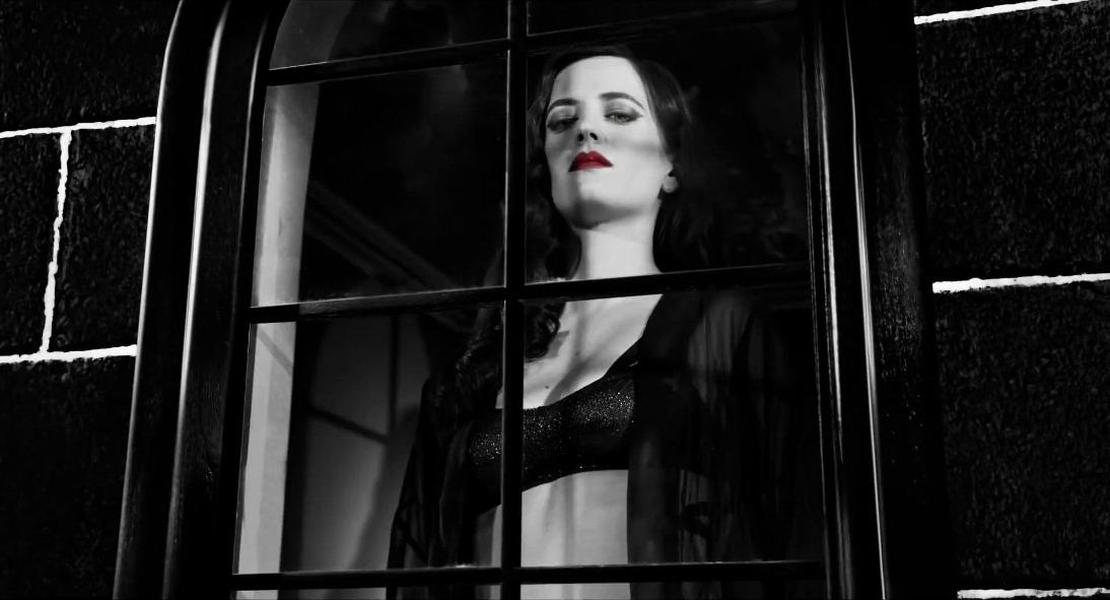| INTRODUCTION
As our society continues to evolve, various social issues have emerged and are becoming increasingly relevant in today's world. From gender inequality to racial discrimination, these issues are affecting the lives of millions of people around the globe. This blog aims to highlight some of the key social issues that will be addressed in our forthcoming film's project: "Name of Hearts" and provide insight into how these issues can be introduced in the characters effectively and sustainably.
| SOCIAL ISSUES
|| Social Issues of the Femme Fatale
A. Overview
Femme Fatales, female characters who are dangerous and seductive, are often depicted as Caucasian. Their physical characteristics have consistently reflected the ideal form of their time. For example, in America after World War II, a curvaceous hourglass shape was highly prized, and sex icons of that era, such as Ava Gardner, Rita Hayworth, and Marilyn Monroe, had such body shapes. Similarly, the hourglass shape has become popular again in the late 2010s. However, many modern femme fatales tend to have the physical attributes of 90s supermodels, such as a tall, slender body, Eurocentric facial features, and a small waist. We chose to make Emma modern, smart, and powerful without any help from a man and wearing appropriate clothes to go against this idea.
B. Points of Reasons
- Stereotyping and Objectification:
The portrayal of female characters as femme fatales perpetuates harmful stereotypes and objectifies women. By reducing them to one-dimensional characters defined solely by their seductive and manipulative qualities, this archetype reinforces the notion that women exist primarily for male consumption and pleasure. It reinforces gendered expectations and limits the exploration of women's multifaceted identities.
- Reinforcement of Gender Imbalance:
The femme fatale archetype often presents women as adversaries or threats to male protagonists, contributing to power imbalances between genders. By positioning women as dangerous and deceitful, this portrayal reinforces traditional gender roles and fosters the idea that women are inherently deceptive or manipulative. It can hinder progress toward gender equality by perpetuating harmful narratives about women's intentions and capabilities.
- Limited Representation:
The prevalence of the femme fatale archetype in media overshadows other diverse and complex representations of women. By focusing on their sexual allure and destructive tendencies, this archetype limits the portrayal of women as well-rounded individuals with agency, aspirations, and depth beyond their seductive qualities. It erases or marginalizes the experiences and stories of women who do not fit this narrow archetype.
- Impact on Self-Image and Perceptions:
The consistent portrayal of femme fatales influences societal perceptions and expectations of women. It creates stereotypes about women's sexuality, suggesting that it is inherently dangerous or immoral. This can lead to the internalization of harmful ideas and impact women's self-image and self-worth. It may create pressure to conform to narrow and unrealistic beauty standards or perform exaggerated femininity to be perceived as powerful or alluring.
- Reinforcement of Harmful Narratives:
Many narratives surrounding femme fatales punish or condemn women for their sexuality or ambition. These stories perpetuate harmful ideas about women's sexual agency, suggesting that it is a source of danger or evil. By associating femininity with deceit and destruction, these narratives reinforce societal biases and contribute to the stigmatization of female sexuality.
C. Examples
- Catherine Tramell in "Basic Instinct" (1992) - Played by Sharon Stone, Catherine Tramell is a crime novelist who becomes a prime suspect in a murder investigation. She is portrayed as a seductive and manipulative character who uses her sexuality to manipulate those around her. Her role here is very well-known in this scene.
- Brigid O'Shaughnessy in "The Maltese Falcon" (1941) - Played by Mary Astor, Brigid O'Shaughnessy is a mysterious woman who hires private detective Sam Spade to help her find a valuable artifact. Throughout the film, she uses charm and cunning to manipulate Spade and others.

- Alex Forrest in "Fatal Attraction" (1987) - Played by Glenn Close, Alex Forrest is a woman who becomes obsessed with a married man after a brief affair. She is depicted as a dangerous and vengeful character who resorts to extreme measures to get what she wants.

- Mal Cobb in "Inception" (2010) - Played by Marion Cotillard, Mal Cobb is a deceased character who appears in the dreams of the film's protagonist. She serves as a seductive and manipulative force, representing guilt and self-destruction.
- Ava Lord in "Sin City" (2005) - Played by Eva Green, Ava Lord is a beautiful and manipulative woman who hires private detective Dwight McCarthy to help her escape an abusive relationship. She is known for her seductive allure and ability to manipulate men to further her agenda.
______________________________________________________________________
|| Social Issues of Suicide Behaviors
A. Overview
One of the recording factors that lead to the higher likeliness of a person’s suicide includes experiencing a recent life crisis, especially the death of a loved one. Before deciding on suicide, the person might have gone through long-lasting sadness and mood swings because they are suddenly trapped in stressful and traumatic situations in which they don't know how to get out. Unbearable pain is normally known as a key factor raising the risk of suicide. To show that Emma is suffering a lot from the crisis which causes excessive crying, we would do some makeup for the actress to create puffy eyes and blotchy skin.
B. Points of Reason
- Misrepresentation and Stigmatization: Films that depict suicide irresponsibly or sensationalize it can perpetuate misinformation, reinforce stereotypes, and contribute to the stigmatization of mental health issues. This can hinder progress in understanding and addressing the complexities of suicide and mental well-being.
- Triggering Effects: Graphic or explicit depictions of suicide in movies can be highly distressing and triggering for individuals who have experienced suicidal thoughts or have been affected by suicide. Irresponsible portrayal can risk exacerbating their emotional distress and potentially contribute to copycat behavior.
- Glamorization and Romanticization: In some cases, movies may inadvertently glamorize or romanticize suicide, presenting it as an act of heroism, liberation, or a way to attain desired outcomes. Such representations can be dangerous, as they may influence vulnerable viewers, especially those already struggling with mental health issues.
- Lack of Authenticity and Nuance: It is essential for films to accurately portray the complexities of suicide and mental health issues. Unrealistic or simplified portrayals can perpetuate misconceptions and hinder public understanding of the contributing factors, prevention, and available support systems.
- Limited Focus on Mental Health: Films that solely focus on the act of suicide without exploring the underlying mental health struggles or addressing avenues of support can overlook the importance of mental health awareness, intervention, and the availability of resources for those in need.
C. Examples
- "The Hours" (2002): The film explores the lives of three women from different periods, all affected by suicide in some way. It delves into the emotional complexities and the impact of mental health struggles on individuals and their relationships.
- "Silver Linings Playbook" (2012): While not solely focused on suicide, the film addresses mental health issues, including a character who grapples with suicidal thoughts. It emphasizes the importance of community support, therapy, and finding hope amidst challenges.
- "A Single Man" (2009): This film examines the aftermath of a man's partner's suicide and delves into themes of grief, isolation, and the complexities of emotional struggle. It portrays the impact of suicide on loved ones and the search for meaning and connection.
______________________________________________________________________
|| Social Issues of feeling grief
A. Overview
“Her eyes were filled with shocking sad tears and wistfully off into the calming sea. She looks lost but found at the same time”
The still-alive person in a relationship will be in mourning after the death of his/her partner. This is a feeling of grief, sorrow, and sadness experienced due to the loss. This person might go through disbelief panic, and numbness. This person will likely feel bad about being the one who is left living. He/She could eventually even become resentful with the partner for leaving him/her. These emotions are all prevalent. There are no rules and proper ways regarding how this person should feel.
There are a variety of feelings after the passing of a partner including loneliness, loss of intimacy, and feeling someone’s presence. If the person has a strong connection with their partner, it is tough to disregard that their presence is no longer around. This is due to their long to be with their partner and the intimacy and closeness they used to be when together. Moreover, likely, the still-alive person would also feel the one who has passed away is actually beside them through sensing the familiar scent, hearing the voice of that person echoed in the ear or even seeing that person act as they did when they were alive. In the beach scene, we illustrate Emma’s feelings through the diegetic sound of Kreacher’s voice echoing in her mind as he reads the letter to confess his love to her. What’s more, the beach is the place where the couple used to spend a lot of time together and have some of their favorite memories of one another. Emma went to the beach, where there were plentiful amounts of nostalgic recollections between the two of them, to relive the closeness and a place where she was connected to him since his death had brought her overwhelming anguish that she was unable to accept the fact that he is gone.
B. Points of Reason
- Simplification and Compression: Films often condense the grieving process into a shorter timeframe for storytelling purposes, which can create unrealistic expectations and misconceptions about how grief unfolds in real life. The complex and long-term nature of grief may be oversimplified, leading to misunderstandings or unrealistic expectations for individuals navigating their own grief journeys.
- Stereotyping and Generalization: Films may rely on specific character archetypes or clichés when portraying grief, such as the "angry widow" or the "stoic mourner." These oversimplifications can reinforce stereotypes and fail to capture the diverse ways in which people experience and express grief.
- Incomplete Portrayal of Emotional Impact: Grief can have a profound emotional impact on individuals, affecting their mental and physical well-being. However, films often focus primarily on the visible aspects of grief, such as tears or emotional outbursts, while neglecting the internal struggles, complexities, and long-term effects that grief can have on a person's life.
- Unrealistic Resolution or Closure: In some films, grief may be resolved neatly and quickly, often through a dramatic event or a character's sudden epiphany. While storytelling often requires a satisfying conclusion, this can create unrealistic expectations for individuals grappling with grief, who may find that healing is a gradual and ongoing process.
- Lack of Representation and Diverse Experiences: Films may predominantly depict grief through the lens of specific cultural, social, or demographic perspectives, potentially leaving out the experiences of marginalized communities or failing to capture the diverse ways in which grief is experienced across different cultures and backgrounds.
C. Examples
- "Manchester by the Sea" (2016): The film delves into the profound grief experienced by its protagonist, highlighting the long-lasting impact of loss and the complexities of healing. It portrays the challenges of navigating grief, guilt, and the process of rebuilding a life
- "A Monster Calls" (2016): This film tells the story of a young boy grappling with his mother's terminal illness. It explores the emotional journey of grief, using fantasy elements to represent the internal struggle and the different ways individuals cope with loss.
- "Rabbit Hole" (2010): The film focuses on a couple's grief following the death of their young son. It delves into their individual experiences of grief, strained relationships, and the search for meaning and connection amidst tragedy.
___________________________________________________________________






.png)



.png)




🥺
ReplyDelete